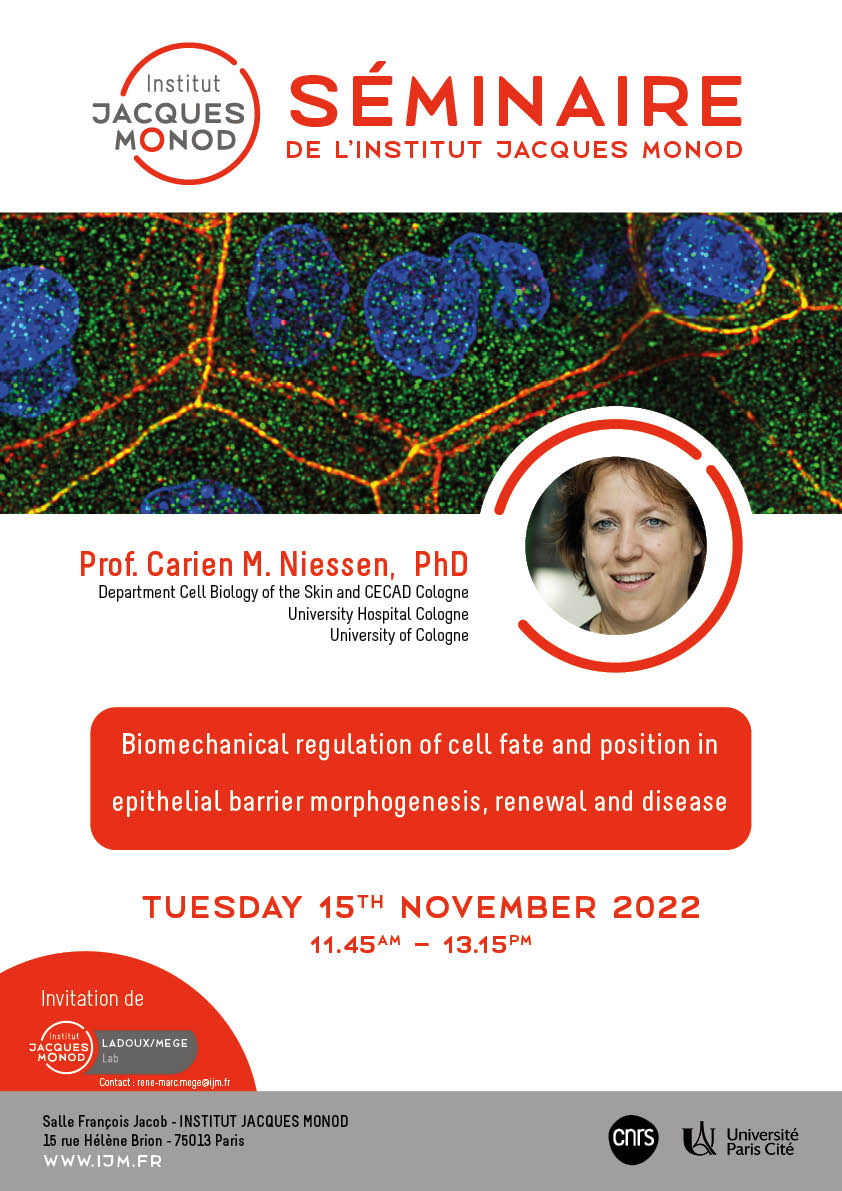Le prochain Cytoskeleton Club aura lieu à l’Institut Pasteur le 16 novembre 2022 dans l’amphithéâtre Agnès Ullmann – côté 25, rue du Dr Roux 75015 Paris.
Avec :
Grizelda Velez Aguilera (post-doc, Pintard 's lab, IJM)
"Role of the Polo-like kinase (PLK-1) in Nuclear Envelope Breakdown in the C. elegans zygote".
Fanny Roland-Gosselin (phD student, Guichet's lab, IJM)
"Implication of…











